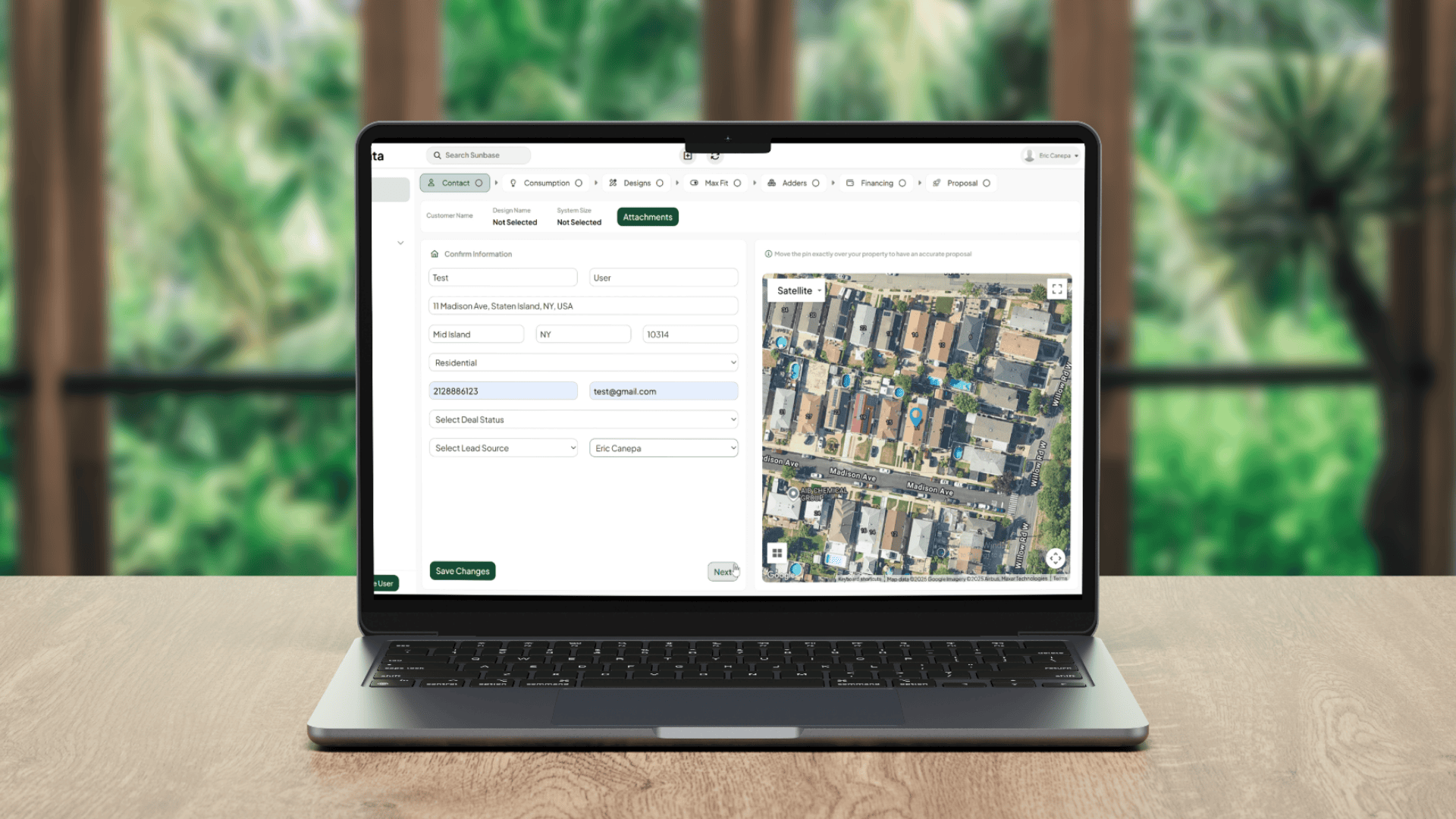May 15, 2023
Definition of CRM:
CRM is a strategy and technology used by businesses to manage and analyze customer interactions and data throughout the customer lifecycle, with the aim of improving customer relationships and driving sales growth. It involves collecting, storing, and analyzing customer information to better understand their needs and preferences, and then using this information to improve interactions and personalize customer experiences.
Importance of CRM:
CRM is essential for businesses that want to build strong, lasting relationships with their customers. By using CRM systems, companies can gather information about their customers' preferences, buying behaviors, and interactions with their brands, which can then be used to create personalized marketing campaigns, deliver exceptional customer service, and tailor product offerings to meet customer needs.
CRM systems help businesses to:
Understand customers better:
CRM systems enable companies to capture and store customer data, including their demographics, buying behavior, and preferences. This data can then be analyzed to gain insights into customer behavior and develop personalized marketing campaigns.
Improve customer experience:
CRM systems can help companies to deliver exceptional customer service by providing customer service representatives with easy access to customer data, including their purchase history and preferences so that they can offer more personalized support.
Increase sales and revenue:
CRM systems can help businesses to target their marketing efforts more effectively, improving the likelihood of converting leads into customers and driving repeat business.
Evolution of CRM
CRM has its roots in the 1980s when companies began using computer systems to manage customer data. These early systems were mainly focused on data collection and management, rather than customer engagement or term customer relationship management re-building.
In the 1990s, CRM systems became more sophisticated, with the introduction of contact management software and sales force automation tools. These systems allowed companies to track customer interactions, automate sales processes, and improve customer service. In the late 1990s, we also saw CRM going Online with Siebel launching the first Mobile CRM - Siebel Sales Handheld. Adoption of mobile CRM was, however, rather poor mainly due to lack of adequate devices.
In the 2000s, the emergence of cloud-based CRM systems transformed the industry, making it easier for businesses of all sizes to adopt a CRM system and technology. Cloud-based systems allowed for greater flexibility and scalability, and made it easier for companies to integrate CRM with other business systems.
Today, CRM systems are more advanced than ever, with the integration of big data analytics, artificial intelligence, and automation technologies. These advancements have enabled businesses to deliver highly personalized experiences to their customers, improve operational efficiency, and gain deeper insights into customer behavior.
Early Years of CRM
The early years of CRM can be traced back to the 1980s and 1990s, when businesses began using computer systems to manage customer data. During this time, CRM was focused primarily on data collection and management, rather than customer engagement or relationship-building.
CRM Systems in the 1980s and 1990s:
The early CRM systems were often custom-built solutions that were specific to the needs of each small business itself. These systems were usually designed to track customer information such as names, addresses, phone numbers, and purchase history. Companies used these systems to keep track of customer interactions and identify trends in customer behavior.
During this time, CRM systems were expensive and complex, and only large organizations could afford to implement them. These early systems were often limited to specific departments within a company, such as sales or customer service, and were not integrated with other business systems.
Focus on Data Collection and Management:
In the early years of CRM, the focus was primarily on data collection and the customer relationship management software. Companies wanted to gather as much information about their customers as possible, so they could better understand their needs and preferences. They believed that by having access to detailed customer data, they could improve customer service, increase customer loyalty, and boost sales.
However, data collection was a manual and time-consuming process, and there was a lack of standardization in data formats. This made it difficult for companies to share customer information across different departments and systems.
Limited Functionality and Technology:
The early CRM systems had limited functionality and technology. The systems were often slow and inefficient, and there was a lack of automation in many processes. Customer interactions were primarily conducted through phone calls and in-person meetings, with limited use of email or digital channels.
The early CRM systems also lacked the analytical capabilities that are now available. Businesses had to rely on manual analysis of customer data to identify trends and insights, which was a time-consuming and error-prone process.
The early years of CRM were characterized by a focus on data collection and management, with limited functionality and technology. The CRM systems were expensive and complex, and only large organizations could afford to implement them. The lack of automation and standardization made it difficult for companies to share customer information across different departments and systems. However, these early systems laid the foundation for the more advanced CRM systems that we have today.
CRM in the 2000s
The 2000s saw significant advancements in CRM technology and practices, leading to the emergence of cloud-based CRM systems, increased focus on customer experience, and integration with other business systems.
The emergence of Cloud-based CRM Systems:
One of the key developments in the CRM market during the 2000s was the shift towards cloud-based CRM systems. Cloud computing revolutionized the way software was delivered and accessed, allowing CRM systems to be accessed via the internet rather than installed locally on individual computers. This made CRM more accessible to businesses of all sizes, as it reduced the need for expensive hardware and software infrastructure.
Cloud-based CRM systems offered several benefits, including scalability, flexibility, and affordability. Businesses could now easily access CRM tools and functionalities from any location and device with internet connectivity. This allowed for better collaboration among teams and improved data sharing across departments.
Increased Focus on Customer Experience:
Another significant shift in CRM during the 2000s was the increased focus on customer experience. Businesses realized that building strong customer relationships and delivering exceptional customer service was crucial to success. CRM systems started to incorporate features that allowed businesses to better understand and engage with their customers.
CRM systems began to include customer-centric functionalities such as customer segmentation, personalized marketing campaigns, and customer feedback management. This allowed businesses to tailor their interactions with customers based on their preferences, needs, and behaviors, resulting in improved customer satisfaction and loyalty.
In the late 2000s also saw the onset of what we refer to as Hashtag Age with Social CRM dominating the way. Businesses shifted from transactional to interactive client relationship management.
Integration with Other Business Systems:
In the 2000s, CRM systems also started integrating with other business systems, such as ERP (Enterprise Resource Planning) and marketing automation tools. This integration allowed for seamless data flow and communication between different departments within an organization.
For example, CRM and ERP integration enabled businesses to streamline their sales and order management processes, resulting in improved sales efficiency and order accuracy. Integration first contact management software with marketing automation tools allowed for better alignment between marketing and sales teams, enabling targeted marketing campaigns based on CRM data.
Furthermore, CRM systems started integrating with other communication channels, such as email, social media, and chat, to enable businesses to engage with customers across multiple touchpoints. This helped businesses to manage customer interactions more effectively and provide a consistent experience across different channels.
The 2000s saw significant advancements in CRM, including the emergence of cloud-based CRM systems, increased focus on customer experience, and integration with other business systems. These advancements paved the way for more advanced CRM practices and technologies that are widely used in modern CRM systems today.
Current State of CRM
The current state of the CRM industry has seen significant advancements in technology, leading to the rise of mobile CRM, big data and AI integration, personalization, social media integration, and automation.
Rise of Mobile CRM:
With the increasing use of smartphones and tablets, mobile CRM has become an essential tool for businesses. Mobile and CRM software allows sales teams to access customer data, manage their sales pipeline, and communicate with customers while on the go.
Mobile CRM also enables businesses to provide real-time updates and notifications to customers, enhancing their customer experience. Additionally, mobile CRM has made it easier for sales teams to collaborate and share information, leading to improved both sales team productivity and efficiency.
Big Data and AI Integration:
The rise of big data and AI has enabled businesses to analyze vast amounts of customer data to gain insights into customer behavior, preferences, and needs. CRM systems can now integrate with big data and AI tools to provide businesses with a 360-degree view of their customers.
With AI-powered CRM solutions, businesses can analyze customer data to identify patterns and trends, predict customer behavior, and make data-driven decisions. This leads to more personalized and targeted marketing campaigns, increased sales, and improved customer satisfaction.
Personalization and Customer Engagement:
Personalization has become a critical aspect of modern CRM. Businesses can now use customer data to personalize their interactions with customers, including marketing campaigns, product recommendations, and customer service.
Personalized marketing campaigns can lead to higher conversion rates and customer engagement. Additionally, businesses can use personalization to make sales reps improve customer retention by offering personalized loyalty programs and incentives.
Social Media Integration:
Social media has become an essential tool for businesses to engage with customers and build their brand. CRM systems now integrate with social media platforms, enabling businesses to manage their social media presence and engage with customers across multiple channels.
CRM systems can track social media interactions and analyze customer sentiment to gain insights into customer behavior and preferences. Additionally, businesses can use social media to provide customer support, offer promotions and discounts, and build their brand awareness.
Automation and Efficiency:
CRM automation has become an essential aspect of modern CRM systems. Automation allows businesses to streamline their workflows, reduce manual tasks, and improve efficiency.
CRM automation includes features such as lead scoring, automated email campaigns automated contact tracking, and task automation. This leads to improved sales productivity, reduced costs, and increased customer satisfaction.
The current state of CRM has seen significant advancements in technology, including the rise of mobile CRM, big data and AI integration, personalization, social media integration, and automation. These advancements have enabled businesses to provide a more personalized customer experience, improve sales efficiency and productivity, and gain deeper insights into customer behavior and preferences.
Impact of CRM on Business
CRM has had a significant impact on businesses, with benefits ranging from improved customer satisfaction and loyalty to increased sales and revenue. Some of the most significant impacts of CRM on businesses include:
Improved Customer Satisfaction and Loyalty:
By providing businesses with a 360-degree view of their customers, CRM has made it easier for businesses to understand their customers' needs, preferences, and behavior. This, in turn, has allowed businesses to offer personalized experiences that meet their customers' unique needs, leading to improved customer satisfaction and loyalty. By using CRM tools to track customer interactions, businesses can identify areas where they need to improve and take action to address these issues. This leads to increased customer satisfaction and loyalty, as customers feel that their needs are being heard and addressed by the business.
Increased Sales and Revenue:
CRM has also had a significant impact on sales and revenue. By providing businesses with better insights into customer behavior, preferences, and needs, CRM has enabled businesses to create more targeted and effective marketing campaigns. Additionally, by automating many of the sales processes, such as lead scoring and email campaigns, CRM has made sales teams more efficient and productive. This has led to increased sales and revenue for businesses.
Better Customer Insights and Analytics:
CRM has enabled businesses to collect and analyze vast amounts of customer data, providing them with better insights into customer behavior and preferences. By using these insights, businesses can create more targeted and personalized marketing campaigns, improve their product offerings, and optimize their sales processes. With the integration of big data and AI, businesses can now analyze customer data in real-time, providing them with even more insights into customer behavior and preferences. This allows businesses to make data-driven decisions that lead to improved customer satisfaction, loyalty, and sales.
Enhanced Collaboration and Communication within Organizations:
CRM has also had a significant impact on collaboration and communication within organizations. By providing a centralized platform for customer data and interactions, CRM has made it easier for different teams within an organization to collaborate and share information. For example, sales teams can now easily access customer data collected by marketing teams, enabling them to create more targeted sales pitches. Additionally, customer service teams can access sales and marketing data to provide more personalized and effective support to customers.
CRM has had a significant impact on businesses, leading to improved customer satisfaction and loyalty, increased sales and revenue, database marketing, better customer insights and analytics, and enhanced collaboration and communication within organizations. As CRM continues to evolve with new technology and capabilities, its impact on businesses is only expected to grow.
Challenges and Future of CRM
While CRM has had significant benefits for businesses, there are also challenges that need to be addressed. Some of the challenges facing CRM today include:
Privacy and Data Security Concerns:
One of the biggest challenges facing the CRM vendors now is data privacy and security concerns. With the increasing amount of customer data being collected by businesses, there is a growing risk of data breaches and cyber-attacks. As such, businesses need to prioritize data security and take steps to protect customer data from potential breaches.
Integration with Emerging Technologies:
As technology continues to evolve, businesses need to ensure that their CRM systems are integrated with emerging technologies such as artificial intelligence, blockchain, and the Internet of Things. This will enable businesses to collect and analyze even more data, providing them with even better insights into customer behavior and preferences.
Adaptation to Changing Customer Needs and Preferences:
As customer needs and preferences continue to evolve, businesses need to adapt their CRM strategies to meet these changing needs. This includes adopting new technologies, improving customer experiences, and providing personalized and relevant content to customers.
Conclusion
In conclusion, CRM has come a long way since its early days, with the emergence of cloud-based systems, the rise of mobile CRM, and the integration of big data and AI. CRM has had significant benefits for businesses, including improved customer satisfaction and loyalty, increased sales and revenue, better customer insights and analytics, and enhanced collaboration and communication within organizations.
However, there are also challenges that need to be addressed, including data privacy and security concerns, integration with emerging technologies, and adaptation to changing customer needs and preferences.
As CRM continues to evolve, businesses need to prioritize customer-centric strategies that focus on delivering personalized experiences and addressing customer needs and preferences. By doing so, businesses can continue to reap the benefits of CRM and drive long-term success in business relationships.
About Sunbase
Sunbase helps solar companies succeed through a suite of Solar CRM tools like Solar Lead Management Software, Solar Proposal Software, etc.! To book your free demo or an appointment, contact us here.
One Platform. Zero Chaos. Run Your Entire Business in One Place.
Sunbase replaces your CRM, proposals, scheduling, job tracking, and reporting tools — all inside one clean, connected platform.
About Sunbase
The All-In-One Platform to Run Your Entire Business
Sunbase helps you organize operations, streamline daily workflows, and manage everything - from first customer contact to final project deliver- in one connected system.
Our Mission
- Organize your business.
- Optimize your workflow.
- Automate what slows you down.
Why Businesses Choose Sunbase
One Connected Workflow
Replace scattered tools and manual processes with a single platform that brings together your team, tasks, customers, jobs, and performance data.
🌎 Global Presence
Serving the United States, Canada, India, LATAM, Australia, and 10+ international markets.
👥 11,000+ Users
Trusted by contractors, installers, project managers, sales teams, and field technicians.
🏗️ Built for All Sizes
From small contracting teams to fast-growing enterprises, Sunbase adapts to your workflow.
Useful Links For You
Stop Managing Your Business Manually. Automate It.
Sunbase automates workflows, reduces mistakes, and helps your team get more done - without hiring extra staff or juggling multiple tools.











